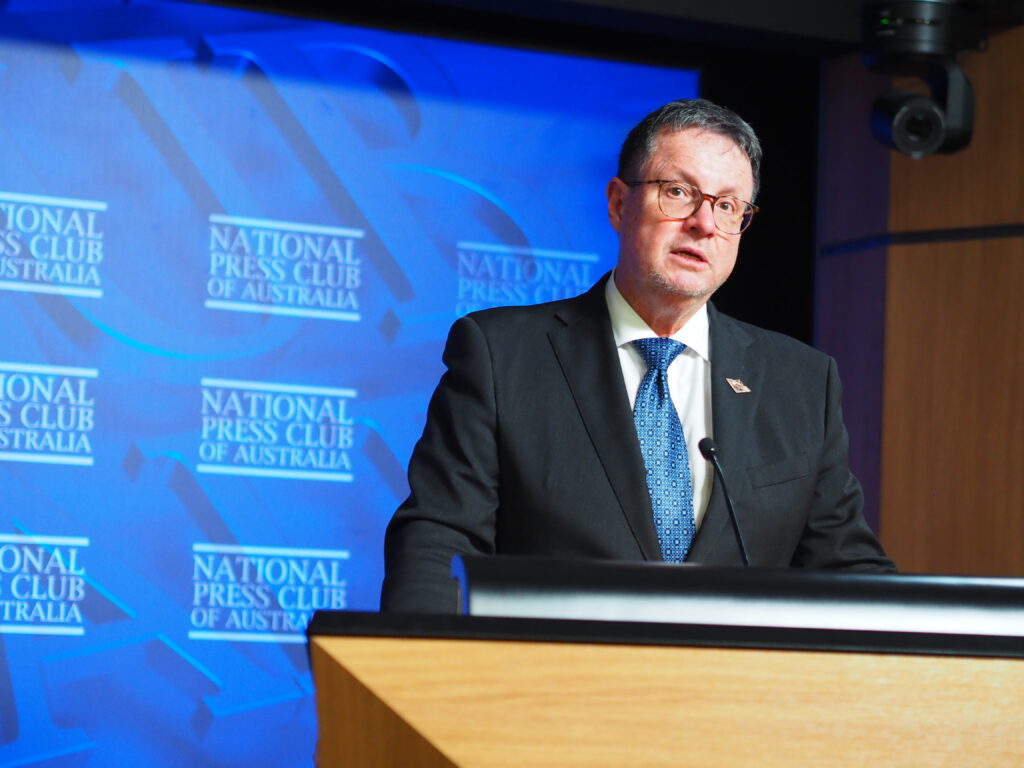Advocates say the National Health Reform Agreement needs more focus on preventive health, with health care spending too often viewed as a cost.
Australia urgently needs to reframe how it views health care spending and treatment, with health advocates saying the system is too focused on treating poor health outcomes in hospital rather than preventing them.
In a speech to the National Press Club in Canberra, the Australian Medical Association President, Professor Steve Robson, said that Australia’s spending on health as a proportion of gross domestic product is modest compared to other OECD countries.
“Our current approach to investing in and managing health is focused very much on treating poor health outcomes not preventing them, which leads to a sickcare [system] rather than healthcare system,” Professor Robson said.
“We need to reframe our thinking and focus more on how the money we invest in health care can improve health outcomes and support economic growth because the evidence is clear; keeping people healthy reduces the costs and burden on our health care system and drives economic growth and productivity.”

Public hospitals “in a mess”
“On public hospitals, our Cycle of Crisis report highlighted the inadequacy of the current funding agreement, an agreement that needs a total refresh to deal with the pandemic legacy that’s left our hospitals in such a mess,” Professor Robson told the National Press Club.
“The current agreement does little to improve performance, it ignores quality, and it has no focus on preventing avoidable admissions — perhaps the biggest problem of all.”
In a submission to Treasury, the AMA argues for Australian economic policy “to recognise that costs associated with inadequate prevention and delayed healthcare”.
Whole of system approach needed
The Grattan Institute, a Melbourne-based thinktank, has also put a similar case to the Australian Government, calling for the policy emphasis to shift from hospital care to keeping people healthy.
“Many people have to manage multiple chronic diseases over decades, so instead of planning and funding individual, fragmented healthcare interventions, the system needs to join up and fit around people’s needs,” said the Grattan Institute’s submission to the National Health Reform Agreement.
The Institute fears that the next version of the agreement may “reinforce the status quo”, instead of emphasising the need for a whole-of-system approach.
“Neither the federal nor state governments can achieve these changes alone,” their submission reads.
“Service systems run by different levels of government – such as public hospitals and GP clinics – need to work together.
“The configuration of the system, from the workforce, to infrastructure, to digital systems, needs to be planned as a whole, not in silos.
“And how funding is divided should be based on population health needs, and the results that services will achieve, not based on turf, precedent, and cost-shifting.”
About the National Health Reform Agreement
The funding and delivery of public hospital services in Australia is governed by the National Health Reform Agreement.
A midterm review is currently underway into the current five-year agreement, which spans 2020 to 2025, and determines public hospital funding between the Australian Government and all states and territories.
The Minister for Health, Mark Butler MP, appointed two former senior public servants earlier this year, Rosemary Huxtable PSM and Michael Walsh PSM, to lead the independent review into the agreement.
In a statement, the Minister said the Review would “consider whether the objectives of the agreement are being met, including:
- the impact of external factors (such as the COVID-19 pandemic) on the demand for hospital services and the flow-on effects
- the performance of small rural and small regional hospitals
- the implementation of the long-term reforms and other governance and funding arrangements, and
- any unintended consequences such as cost-shifting, perverse incentives or other inefficiencies that impact on patient outcomes.”
Looking long-term
The issue of cost-shifting was raised by the Royal Australian College of General Practitioners (RACGP) in its submission, saying patient outcomes are negatively affected by “cost-shifting between primary and secondary care, as well as fragmentation between health, disability, and aged care systems”.
“Too often we have seen health spending committed to isolated projects targeting specific diseases and reacting to demand rather than investing in cost-effective sectors that will deliver system-wide long-term benefits,” the RACGP’s submission reads.
One of its recommendations is to improve communication between general practices, hospitals and other health services: “Support hospitals and other health services to use standardised, secure, interoperable digital systems for data sharing, referral and discharge between general practices and hospitals and facilitate fast and easy clinician-to-clinician communication to facilitate referral and discharge and discuss patient care.”
Continued innovative thinking is required to help overcome the challenges faced in the health system, said AMA President Professor Robson, who pointed to the whole-of-system response to the COVID-19 pandemic.
“While COVID-19 laid bare some shortcomings in our health care system it also clearly demonstrated the opportunities for innovation in how we deliver health care and how remarkable things can be achieved when governments, healthcare professionals and the community work together,” he said.
Subscribe to the free InSight+ weekly newsletter here. It is available to all readers, not just registered medical practitioners.

 more_vert
more_vert
Funding by “what is done” promotes a culture of “do more” regardless of what needs to be done. So we see futile and heroic treatments without much benefit for Australia. Better to fund by need according to population requirements, with someone responsible for the population deciding caps on where the dollars are spent prospectively. The current model diverts funding to tertiary facilities with an availability bias to treating patients in their immediate vicinity, while rural and remote regions struggle to access any but emergent care.
If you want to reduce costs to secondary care, then get the best doctors into primary care. Currently not happening, with the lowest levels of recruitment to general practice in a very long time.
It stands to reason than if there are 100 applicants for 10 jobs, then you at least have the opportunity to employ the best candidate. If however there are only 5 candidates for 10 jobs then you have no option but to take on a number of applicants who would not otherwise be considered. These candidates are then part of the problem for the 40 years of their working lifespan.
I support each and every assertion of this article and complement the people and institutions quoted. I am retired after various “lives” a trainee physician, epidemiologist, public health physician, hospital medical director and regional manager of a remote region health service, reviewer of tertiary services and technologies, director of WA prison health services and then, over 30+ years as a Consultant Psychiatrist working in Community MH, leading a ED MH service and also CL service in wards of a tertiary hospital. At each and every turn I have been confronted with fragmentation of services and systems at all levels with inefficiency and poor clinical outcomes and wasted preventative opportunities for all of the reasons mentioned and more. In particular attempts to liaise and cooperate with primary care services were often compromised. Furthermore I was involved in, and aware of, many attempts to remedy some of these problems due to inertia and resistance by individuals, organizations and systems. I look forward to following positive changes and wish you all power in broadcasting efforts and results for change.
There is too little spent on prevention, and some of that should be in schools given the positive correlation between education and health. However the intense marketing of profit-generating unhealthy lifestyles and their limited taxation will continue to negate preventative efforts for as long as governments fail to act.